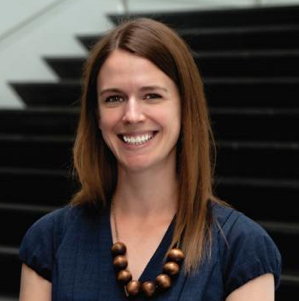Discussing historical portrayals of women and the role of art in an evolving world
Written by Melanie Taussig
2020 marked a monumental milestone in history, the one-hundred-year anniversary of the 19th Amendment, which granted women the right to vote in the United States. Although a woman participating in democracy probably doesn’t seem like a revolutionary idea today, at the time it was a colossal triumph. A century later, we are still having conversations, sometimes difficult ones, about gender equality. These conversations span across virtually every industry and facet, including in the vast world of art.
Over thousands of years, in various forms, artists have fashioned imagery, imparted stories, and used creative expression to push the boundaries of what might be comfortable or status quo. Art allows us unique opportunities to see attitudes reflective of the time in which they were created. It grants a window to appreciate the influence of respective time periods as well as examines messages and inferred meanings.
Art can be an escape, ignite the imagination, and transport individuals into another moment, even into another universe altogether. Effectively, art can serve as a portal, providing important information and depicting cultural and political movements. Recently, there have been widespread conversations about injustices that people from marginalized backgrounds, including women, have long been subjected to. In a post-Times Up era, I began to ponder questions about gender roles portrayed in artwork throughout the years. I wondered what can we learn and ascertain from the ways in which women have been portrayed? What messages are conveyed and how might those messages be received and interpreted? How does history, as shared through art, influence how women have been seen and how they see themselves?
Dr. Molly Medakovich is an educator at the Denver Art Museum, with academic training and specialization in female artists and French Art History. On a crisp autumn afternoon in 2019 Dr. Medakovich and I met for a thought-provoking conversation about the influential role art plays in our lives. Dr. Medakovich discussed how women have been portrayed in various works of art, from prehistoric times to modern day, and periods in between. She provided great insights about women both as subjects of artwork and as pioneers in an audacious crusade to advance as professional artists.
The intersect of art, philosophy, and emerging ideas
The Age of Enlightenment during the 18th century was a period of great change; scientific ideas were emerging about women’s bodies, their intellect, and their roles in society. These innovative ideas were reflected in art and may have been a factor in the evolving ways that women were portrayed. According to Dr. Medakovich, during this time there was an emergence of what would be considered a “nuclear family,” with codified gender roles and sentimental bonds within the family system. In many instances, art depicted a traditionalist view of what a family was, showcasing women in the role of nurturing mother and supporting the idea that a female would tend to her own children.
This view is reflected in the works of some of the famous philosophers of that time. Dr. Medakovich discusses Jean-Jacques Rousseau who believed that women were designed to be in the household, playing the role of wife and mother. Rousseau considered maternal acts such as breastfeeding one’s own children— rather than sending them off to a wet nurse, as many upper-class women did— as essential to this new model of motherhood. “In the visual arts of this era, we begin to see the depiction of a new intimacy of the family in the domestic setting,” explains Dr. Medakovich.
Happy families and contented mothers appear in paintings like Jean-Honoré Fragonard’s The Happy Family (c. 1775; National Gallery of Art) and Pierre-Paul Prud’hon’s The Happy Mother (c. 1810; The Wallace Collection). These and other images highlight the emotional bonds between parents and children.
During this time period women’s talents and attributes were largely subverted. There was a systemic lack of access to opportunities for women to develop their intellect and skills. Women engaging in pursuits such as painting watercolor or playing the piano were to be conducted in an amateur manner, not professionally. Explains Dr. Medakovich, “Something that shows women are cultivated and have good taste. [Such activities] are meant to be done in the privacy of the home.” These imperious attitudes prohibited many women of the dominion over their own potential, including the possibility of being financially self-sufficient.
Women, particularly those who were middle and upper class, were largely relegated to practicing their passions in the home or for the pleasure of a young male admirer, who might view a woman in her element as an object of his desire. A young woman’s talents were part of an arsenal of domestic skills that were seen as beautiful and enticing to potential male suitors. Dr. Medakovich surmises, “I wonder if was more about the fact that should a young woman develop ambitions to take her talents into the public, professional realm that many hurdles awaited her.”
Depictions showcasing the saliency of female deference and modesty would likely be seen as offensive today but were not considered extreme at that time. This demonstrates how artwork can be an example of cultural appropriation. “Art is about the time in which it was created,” says Dr. Medakovich. “How we interpret it tells us a lot about our own time and society. Feminist art history in the 1970s and the following decades did a tremendous job in reevaluating the 18th century and offering new tools for interpretation.”
Women artists: A pioneering effort
In the 18th century the official training ground for artists was the Académie Royale de Peinture et de Sculpture in Paris, France, where there were early institutional efforts to deny women an education. When the prestigious institution eventually did admit women, the cohort of female students was limited to only four. It was this type of structural oppression that substantially circumscribed women artists from earning their own wages. “At that time, it was the idea of showing women in polite pursuits of the arts,” says Dr. Medakovich. “That women pursuing professional practice as painters or sculptors were never going to be anything serious.”
This type of confinement limited the exposure of female artists and in some ways, restricted representations of women’s own experiences. “Until we start seeing women becoming artists and creating their own imagery, we often look at how men had been interpreting and assigning meaning to the female form and body,” says Dr. Medakovich. “I think one of the most powerful moments in the history of art is when women start to represent themselves and they do it through a lens of meaning-making around gender.”
As women incrementally gained more liberties, they also gained more opportunities to artistically express themselves. “Small efforts are always necessary for long-term change,” says Dr. Medakovich as she references Adélaïde Labille-Guiard, the female artist who painted a portrait prominently featuring two female students who were under her tutelage. As one of the four female members of the Royal Academy at the time, Labille-Guiard was largely in a class of her own, tantamount to being in a modern-day “boys club.” This exclusive position provided her prospects to mentor and advocate for other women artists, making her a vanguard for gender equality.
These efforts continued beyond the 18th century. In 1881, artist Hélène Bertaux founded the Union of Women Painters and Sculptors to support and promulgate the advancement of women artists. Membership to this group was comprised mainly of women who were denied admission into to École des Beaux-Arts, the successor to the Académie after the French Revolution and just as exclusive to male artist as its forebear. The Union served as a platform for women artists to display their work and make their mark in the art world. Dr. Medakovich refers to these efforts as “brazen and ahead of the times.”
Toward the end of the 19th century and into the beginning of the 20th century a cultural shift started to take place. As Dr. Medakovich explains, images of the “new woman” began to surface. “You see this new archetype show up in visual culture, this more assertive female figure both in Europe and in America.” These images were a vast aberration from artistic portrayals of women up until this point.
Imageries of a fancy upper-class girl playing the lute or [what was regarded as] a “good” mother breastfeeding her children were soon accompanied by portraits of women smoking or engaged in activities traditionally associated with men. “Some scholars have pointed to paintings such as Edouard Manet’s Plum Brandy (c. 1877; National Gallery of Art) or Jean Béraud’s Rond-Point des Champs-Élysées (c. 1880; private collection) which pictures a young woman driving the reins of a horse-carriage with a male passenger in back, works indicative of nascent feminism, new independence, and public visibility of women in Belle Époque Paris.” The introduction to this more sophisticated woman conjured questions. “It begins to become more diverse in terms of who is being represented and how,” says Dr. Medakovich. “More voices are coming into the conversation as women become more empowered as artists and as professionals.”

The quest for idealism and implications for women as times progress
Long before we had 24/7 access to cameras and interminable opportunities to capture the perfect “selfie” and many moons before airbrushing, the idyllic portrait came in the form of interpretation created by artists. Today, social media allows for an idealized version of our best selves to satisfy society’s insatiable appetite for scrutiny in the ever-changing and ethereal world of the Internet. Perhaps things such as airbrushing and filtering are the modern-day equivalent of painting or sculpting subjects in their most ideal forms.
Over the course of many years, art has provided different examples of female beauty. Conjecture about the ideals of beauty has evolved over centuries. When it comes to portraiture, a vital question according to Dr. Medakovich is, “how I wish to be seen verses how I think society wishes to see me.” Such distinctions were being drawn hundreds of years ago and remain relevant today, in a culture preoccupied with technology. “Social media offers us the opportunity to promote idealization. That is not unlike the painted portrait. During the 18th century if a woman were to be painted, she may very well not want the artist to paint the lines in her face, the warts, the blemishes, whatever imperfections existed. The idea was to be painted ‘as I wish to be seen,’” says Dr. Medakovich. “As the subject, [of the painting] you have that directive.” Omitting certain features in the 18th century could perhaps be an antiquated version of manipulating features via technology tools today. If an individual posts a picture on social media that image is theoretically available to anyone in an individual’s network and oftentimes, beyond. “Back in the day,” explains Dr. Medakovich, “[viewing of personal portraits] was available to a more limited audience and the stakes were just different.”
Today, the pervasiveness of social media along with a ravenous desire for getting the “perfect picture,” can influence authenticity depicted in pictures. It is perhaps the social media revolution that has implored us to consider, “What is idealized beauty? Who is defining that? and, How has beauty evolved over time?” Such tacit and rhetorical questions are imbuing our collective space and likely parallel some of the pressures that women experienced centuries ago. Says, Dr. Medakovich, “Some art is meant to provoke and go past boundaries. It shows us who we are as a society and it becomes that fodder for the conversation about what we do, what we believe in and what we tolerate.”
Beyond gender: How art informs, challenges, and unites us
As times have become more progressive, there has been an increased willingness for people to come to the table with an open mind, particularly among younger generations. As attitudes and beliefs have evolved over the years, so has art. Consider the forward-thinking era of the 1960s. “With the First wave of Feminist Art in the U.S. you start to see women being focused on the body and creating artwork that is about the female body in a really provocative way,” says Dr. Medakovich.
In the 1970’s Judy Chicago’s “The Dinner Party” was among the works that pushed social boundaries. Dr. Medakovich discusses the symbolism of this iconic work, “Women who had never been at the table because of how society prevented access and because of societal and cultural barriers.” The 1980’s saw the radical interventions of the Guerilla Girls, an anonymous group of feminist artists who wear guerilla masks and address controversial questions about literal representation of the female body by male artists as well as representation of their work in museum collections.
Innovative thinking has influence within the art world, inspiring modern expressions of creativity and in some cases, prompting compelling discussions. Artwork of all kinds is a conduit for engaging with others and has a unique ability to unite people, independent of agreement. Consider current times; while there is ongoing debate about almost every aspect of life, art has been a connector, prompting people to come together in unique ways. It is something that Dr. Medakovich can attest to, discussing how art invites connections and conversations, some of which would never have commenced otherwise. “In the museum world, we call art ‘the third thing. (or a “social object”)’” Dr. Medakovich explains how art can be an inroad that brings people together and leads to meaningful exchanges.
We stand to learn a great deal from the stories and perspectives that are shared with us through artistic works of the past. Engaging with art can provide a historical context of past events that may provoke difficult questions, which can engender contemplations about circumstances of the present. Art has an ability to poignantly humanize history, a sentiment acknowledged by Dr. Medakovich. “Art tells us a lot about the human experience. It’s a vehicle for storytelling. Art allows us to be absorbed in the moment; to be absorbed in something external to ourselves. It gives us the opportunity to just be.”



 by
by 

